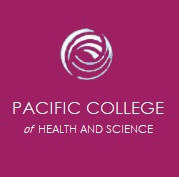Know your menstrual cycle, what it means, what’s happening “down there”! Menarche, the onset of menstruation, begins at puberty, typically around age 12-13. There is a trend toward girls beginning menstruation earlier, with the Standard American Diet and our increased exposure to chemicals being identified as the culprit.
Therefore, it is important that teens and women in their 20’s be attentive to a diet high in non-GMO and organic vegetables, proteins and fruits, that they get adequate water intake (at least eight 8 oz. glasses or 2 liters) each day. Susan will break down why each of these is important in her intake and follow ups with you.
Menstrual Cycles are expected to be 28 days in length, with ovulation occurring at Cycle Day 14 and menstruation occurring at Cycle Day 28. Cycle Day 1 is considered the first day of menstrual flow. Not every woman follows this pattern, and a moderate deviation can be normal. However, long cycles with irregular patterns can signal the development of metabolic and reproductive health issues such as Polycystic Ovarian Syndrome, so it is wise to discuss and resolve irregular cycles with diet and lifestyle approach, not simply by taking an oral contraceptive pill to artificially regulate menstrual cycles.
Note: in some cases, it can be helpful to use the pill as well; however, it is not a substitute for finding and addressing the cause. Read the Menstrual Cycle Timeline below.


This is a time when women and couples may try to grow their family. It is important to know exactly what is happening in a woman’s reproductive system in order to support healthy follicles, predictable cycles and to enhance the environment for optimum reproductive health, a concept described as epigenetics, a way in which to positively influence the genetic expression at every cell in our bodies, including eggs and sperm.
Not surprisingly, this includes dietary and lifestyle recommendations to support nutrient-rich blood flow to ovaries and uterus (as well as male gonads and sperm production, by the way). Read Menstrual Cycle Timeline listed below for understanding and optimizing your cycle.
Life in your mid to late forties.
Life in your mid to late forties.
This is the time of peri-menopause and menopause, when a woman’s menstrual cycles are naturally shifting, and ovaries are naturally producing fewer hormones.
As ovaries reduce their production of estradiol, the adrenals’ production of estrone becomes more important.
Thus, if a woman has been stressing her adrenals in her 30’s and 40’s with work, family, and yes, dietary and lifestyle indiscretions, the result will be elevated symptoms of hormonal imbalance and hormonal clearance issues, including hot flashes, night sweats, mood lability, insomnia, reduced libido and thinning of vaginal wall to name a few.
While I’m not opposed to a woman incorporating hormone replacement therapy in her first few years of menopause (defined as one year without a menstrual cycle), she is far better prepared for an easy transition if these imbalances are cleared up.


A few areas of concern to women in their 50’s, 60’s and beyond include:
- Strength and integrity of our musculoskeletal system. This can be achieved and maintained through proper nutrition, exercise and sleep regimens. Susan can help focus on improving the gut microbiome, from which hormonal, neurotransmitter and nutrition communications are derived.
- Cognitive health preservation. Cognitive decline diseases have been on the rise; however, there are proven methods to stave off or even reverse signs of early cognitive decline that can incorporate dietary and lifestyle changes, as well as supplementation unique to the type of disharmony that may be causing brain inflammation. Dr. Dale Bredesen has identified five subtypes: toxic exposure, inflammatory, atrophic, glycol-toxic (known as Type 3 Diabetes), and traumatic injury. Each of these has different approaches to treatment.
- Sexual health. As hormones shift, a woman’s vaginal tissues can become dry and thin, making intercourse painful. Lower hormone levels can also reduce our desire for sexual expression, yet women wish they could enjoy libido and juiciness they once had. There are tools and supplementation that can help women remember themselves as sensual, sexual beings through their entire lives; Susan will help you find the right resources for your unique needs.
Understanding your menstrual cycle.
Understanding your menstrual cycle.
Cycle Day 1 (actually just before): The body gets the signal that no conception has occurred. Hormones drop, which signal the onset of shedding the menstrual lining, your period.
Cycle Days 2-3 up to Ovulation: The pituitary gland of the brain releases Follicular Stimulating Hormone (FSH) to grow a cohort of follicles in the ovary, with one expected to take the lead to ovulate an egg. As follicles grow, they secrete Estrogen, which signals the uterine lining to grow and ultimately changes the form of cervical secretions to allow passage of sperm to egg.
Cycle Day 17+/-21: Once the egg is released from the follicle, the follicle transforms itself to the Corpus Luteum and begins to secrete Progesterone, which helps to thicken the endometrial uterine lining for embryo implantation. If conception occurs, the fertilized egg travels from the fallopian tube and in 5-6 days travels to the uterus to begin implantation. The embryonic cells attach to the uterine lining and release human gonadotropin hormone (hCG), the hormone that signals pregnancy is underway.
Cycle Day 28+/-: If no conception occurs, no hCG is released and all hormone levels drop so that the endometrial menstrual lining sheds and the process begins anew.







